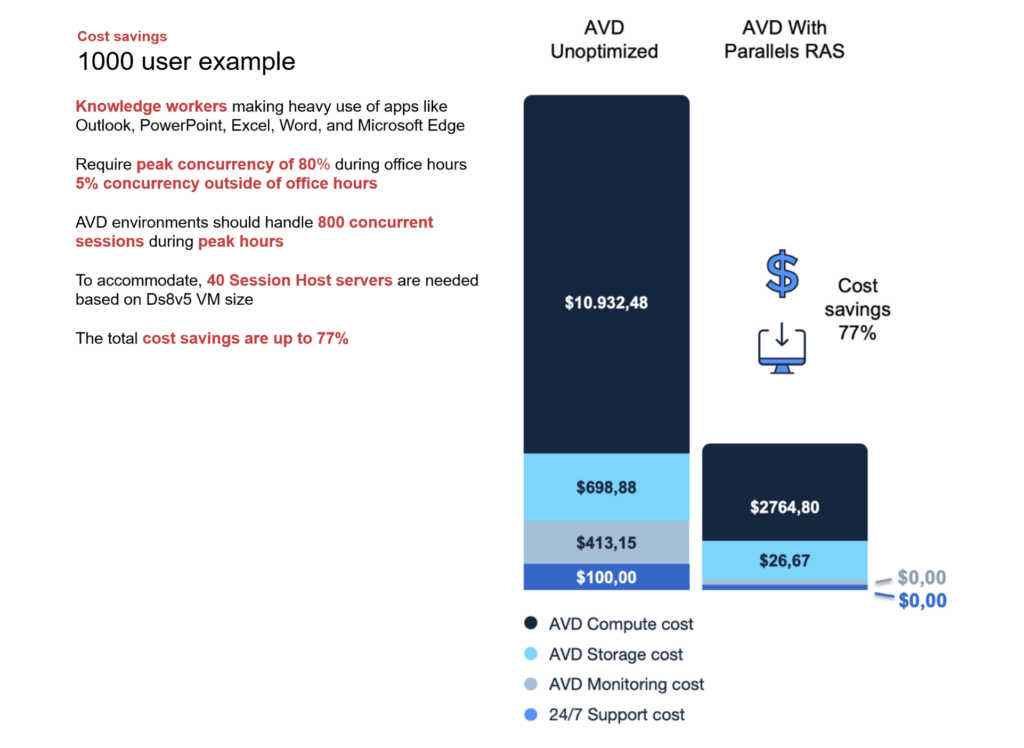More and more companies are considering a hybrid cloud approach for better control and customization over things like security and costs. Hybrid clouds offer the benefits of a public cloud with the agility of a private cloud and/or hosting workloads on-premises. Although public have quickly evolved from new-fangled fringe technology to far beyond the perimeter and into the mainstream, they aren’t without potential detractors and complications. For one thing, cloud migration can be intimidating. And second, there’s a shortage of skilled IT staff with the necessary cloud-specific skills. A recent Parallels Hybrid Cloud Survey revealed more about how organizations and IT leaders are engaging with the hybrid cloud.
Not everyone has their head fully in the cloud(s)—here’s why
The survey found that, among those who say they aren’t getting enough value out of the public cloud, 41% cite migration complexity as a significant concern.
As if migration to the cloud weren’t challenging enough, it requires the availability of qualified staff for migration deployment and management. In case you haven’t heard, there’s a massive shortage of skilled staff in the IT space. IT recruiting challenges were another commonly cited concern. Even if IT roles are fully staffed, cloud-specific skills may still be lacking. One in three respondents struggling with cloud adoption says a lack of in-house expertise is a driving factor.
This isn’t a benign issue. There’s plenty at stake. According to the survey, nearly two-thirds of IT professionals (62%) find a lack of cloud management skills to hinder growth. That’s an even bigger issue among mid-sized companies (those with 500 – 1,999 employees), where 72% think growth is stunted.
But how can you overcome barriers to growth when you don’t have the resources to do so?
For many, that’s where hybrid cloud comes in.
Mind the gap
There’s a reason hybrid cars are capturing so many headlines right now: consumers love blending the efficiency of electric vehicles with the familiarity and perceived dependability of gas-fueled cars.
Hybrid is meant to deliver the best of both worlds, and many IT leaders are finding that the same goes for the cloud space.
The hybrid cloud is a dynamic mix of public and private clouds with on-premises infrastructure. It’s helping organizations embrace digital acceleration while keeping a foot in legacy operations, and some IT leaders say it’s revolutionizing how they manage their data and applications. A hybrid approach allows for more gradual cloud adoption, bolstered by user-friendly software solutions incorporating automation and security measures.
Using a hybrid cloud structure might help organizations balance a desire for growth and digital acceleration with a persistent lack of skilled expertise, enabling organizations to harness the full potential of the cloud, even without a full roster of specialized cloud management skills.
The survey found that nearly two-thirds (64%) of respondents already use a hybrid approach. Almost one in four (38%) plan to ramp up focus on a hybrid cloud approach in the next year, whether starting the process or elevating their investment in the hybrid cloud. This surge signals a broader recognition of the benefits that hybrid solutions bring to the table.
A hybrid approach for a hybrid world
Perhaps not surprisingly, the hybrid cloud is most popular among companies that embrace a hybrid workplace model, with employees mixing in-office and remote work. A hybrid approach works well for organizations that still rely on existing infrastructure but need to support operations that extend beyond a perimeter. Among respondents, 83% currently work within a hybrid workplace model, and a whopping 82% of those use the hybrid cloud.
Regardless of the workplace model, the hybrid cloud may deliver several attractive benefits compared to a 100% public cloud structure or a 100% on-premises structure. Respondents found the top five benefits of a hybrid approach to be:
- Increased flexibility (49%)
- Improved security (46%)
- Cost savings (45%)
- Increased reliability (44%)
- Scalability (40%)
How to get the most out of the hybrid cloud
Legacy applications remain the backbone of IT infrastructures, with 96% of professionals indicating an ongoing need for legacy Windows and Linux applications. Nearly half (49%) expect this need to persist for the next five years and beyond. A hybrid cloud approach can be instrumental in navigating legacy application challenges, enabling organizations to make incremental changes to their infrastructure needing a total application overhaul.
In a dispersed workforce with an increasingly diverse range of devices (both company-owned and personal) being used, solutions like Parallels Remote Application Server (RAS) are critical to the success of the hybrid cloud. Parallels RAS enhances automation and security for end-user computing in a hybrid cloud setting. This ensures cost efficiency and reduces administrative overhead, especially in environments like Microsoft Azure Virtual Desktop (AVD).
Avoiding storm clouds ahead
The gap in IT professionals is expected to expand significantly between now and 2027, creating an urgent need for the industry to find new ways of driving innovation while maintaining security and productivity. An overwhelming 82% of respondents in large enterprises find value in the hybrid cloud, and that number is likely to rise with new releases of supportive technology like Parallels RAS.
Parallels RAS can help facilitate gradual, user-friendly cloud migration while making it simple and cost-effective for businesses and individual customers to use the applications they choose, anywhere, anytime.
The Parallels Hybrid Cloud Survey was conducted in July 2023 with data from 805 IT professionals using the public cloud to some extent in the U.S., UK, and Germany. Access the full report to learn how organizations and IT leaders are engaging with the hybrid cloud.
